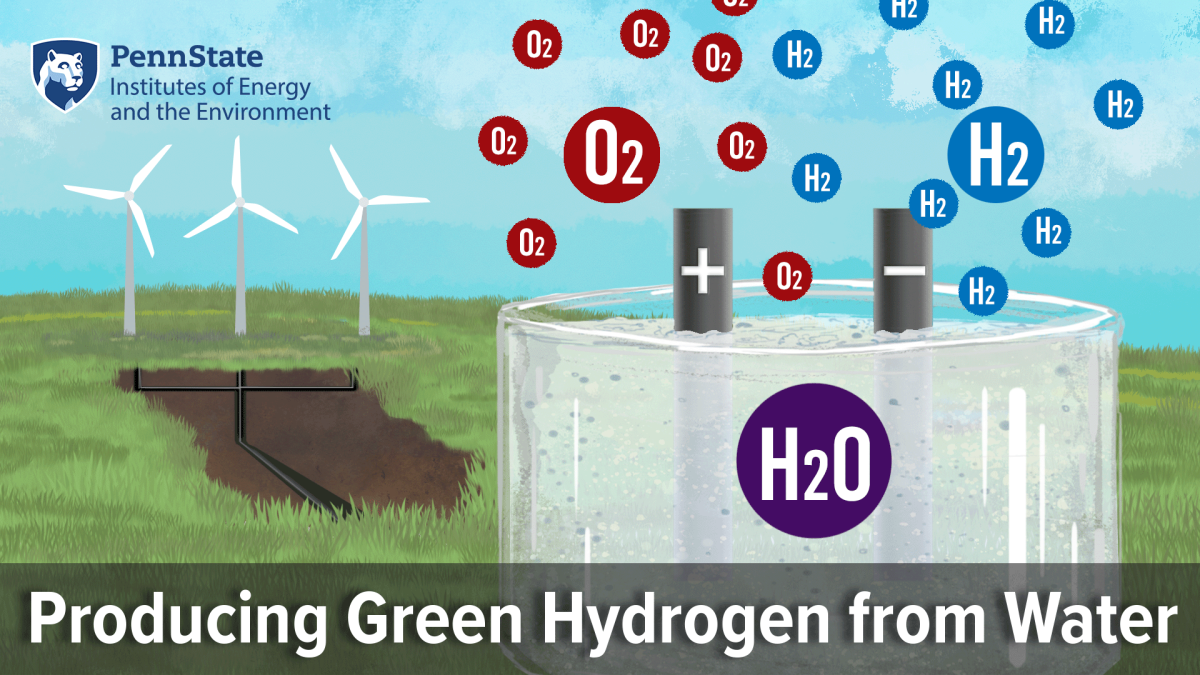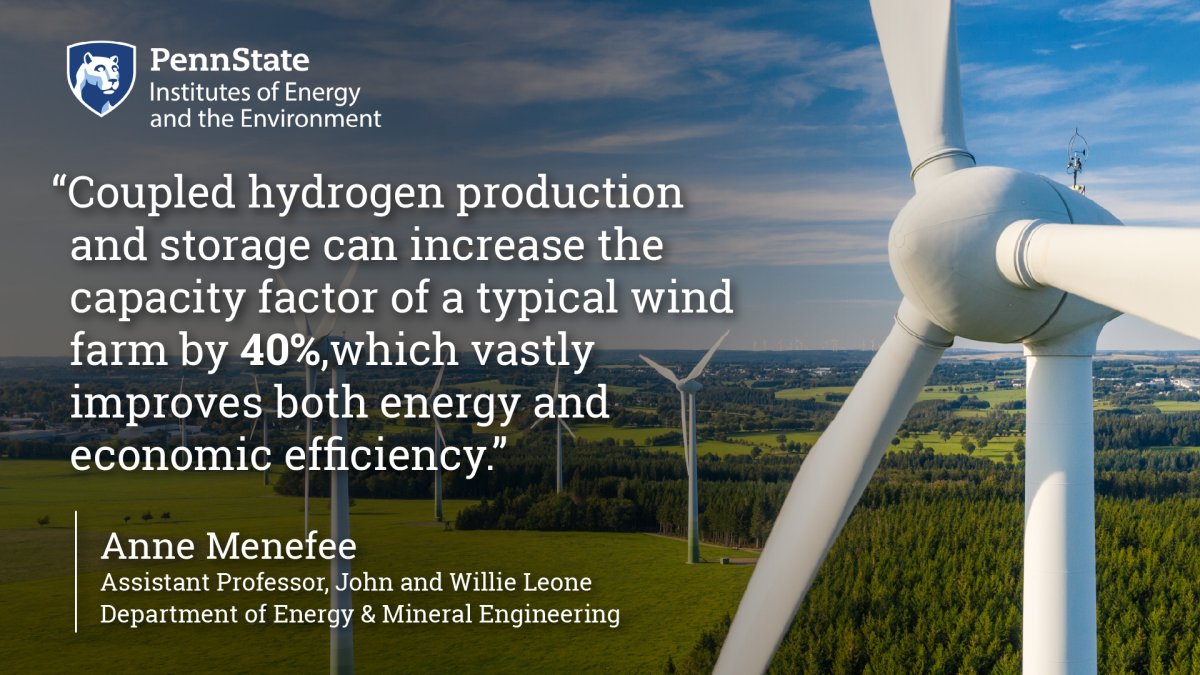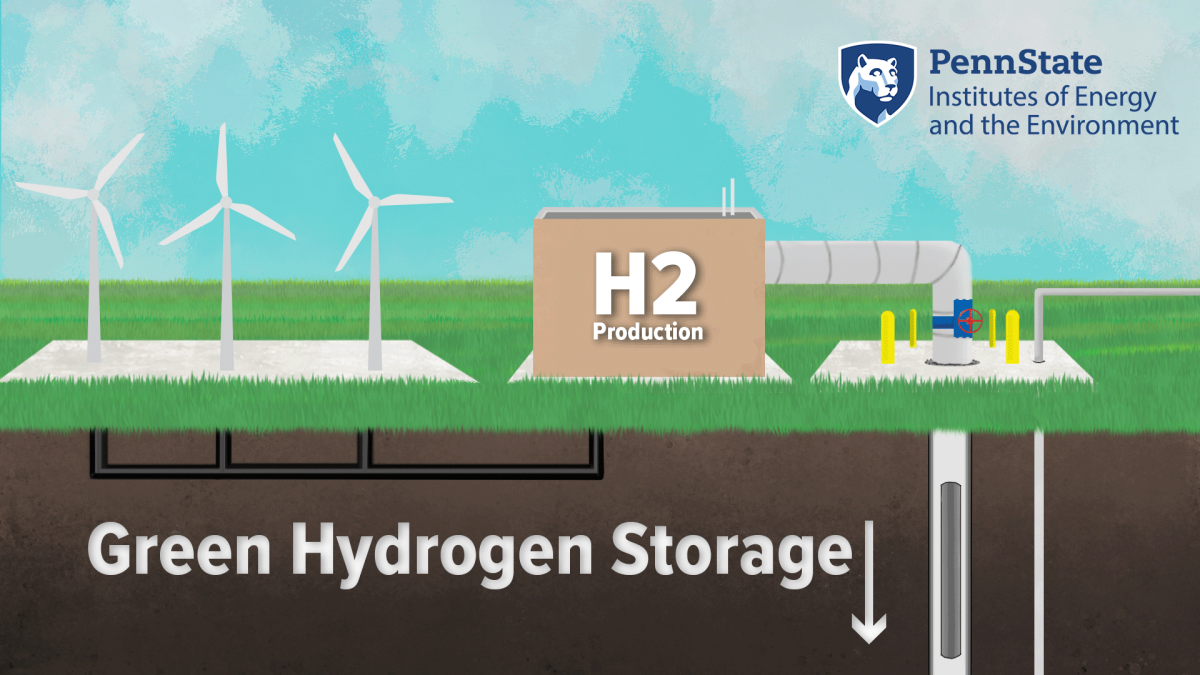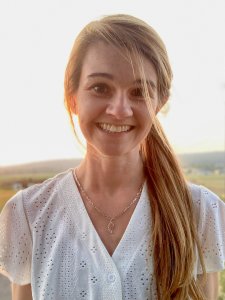Hydrogen is gaining traction as a key player in the transition from fossil fuel energy to renewable energy. When used as a fuel, hydrogen produces only water vapor as a byproduct, making it a low-carbon energy carrier that could replace carbon-intensive fossil fuels in energy-intensive sectors.
Hydrogen also addresses the main challenges of reliable and scalable renewable energy—curtailment, which is when “excess” energy is lost due to the inability to use or store it, and intermittency, which is the inconsistent availability of sunshine or wind. Through emerging hydrogen production and storage pathways, excess renewable energy from intermittent sources (like solar or wind) that would otherwise be curtailed can instead be used to split water into hydrogen and oxygen, a process called electrolysis. Hydrogen produced in this way is called “green hydrogen,” which can be stored and distributed to electric grids to help balance grid load fluctuations.

Storing large volumes of hydrogen at the surface is challenging. Because of its low density, hydrogen must be stored at high pressures to adequately compress it. Another concern is safety. Hydrogen has a low ignition temperature and is highly flammable.
The most efficient place to store and pressurize the large volumes of hydrogen necessary to keep up with grid-scale energy supply and demand is likely underground.
Right now, the only proven subsurface hydrogen storage repositories are salt caverns, which are basically salt formations that have been excavated through solution mining to create an underground “storage tank.” The challenge is that we have very few salt formations around with the right thickness and capacity to support this. In the U.S., salt caverns are mostly limited to the Gulf Coast.
This limitation has prompted interest in expanding hydrogen storage options to porous reservoirs that are both capable of storing large volumes of hydrogen and can be better co-located with renewable power systems. In theory, hydrogen could be stored in saline aquifers or depleted oil and gas fields found in sedimentary basins, which are also leading targets for geologic storage of CO2 emissions.
Scientists have been studying CO2 storage for decades and have a lot of information on what makes a good storage reservoir. For example, the storage rock needs to be porous (to store a lot of gas) and permeable (to be able to inject a lot of gas). Storage reservoirs must also have a secure overlying caprock, to prevent upward migration or leakage of the gas.

But one key difference is that CO2 storage is just that: storage. Whereas with hydrogen, we also want to be able to extract it seasonally or intermittently for energy applications. This is generally more difficult to achieve in porous reservoirs, where hydrogen is stored within the pore space of rocks, rather than in open, capsule-shaped salt caverns. Additionally, hydrogen is the lightest element, raising concerns over diffusion and loss or leakage from the storage site. The integrity of wellbores and overlying caprocks will likely be even more important to hydrogen storage than CO2.
There are a lot of engineering challenges with storing hydrogen in the pore space of subsurface rocks, but is there any “business case” for subsurface hydrogen storage that makes this approach even worth our efforts?

I, along with my colleague Brandon Schwartz, wanted to get at this question, as it’s important to understand the technical and economic aspects that would enable geologic hydrogen storage in addition to the subsurface physicochemical processes. Some of our recent research looks at the technical and economic feasibility of coupling wind power with green hydrogen production and different underground storage options. To do this, we explored a range of scenarios that account for uncertainties in design, costs, and performance.
The results suggest that coupled hydrogen production and storage can increase the capacity factor of a typical wind farm by 40%, which vastly improves both energy and economic efficiency as well as the overall reliability necessary to increase wind power penetration into full-scale electric grids. Project economics are more favorable when hydrogen is stored in salt caverns than in porous reservoirs, in part because porous reservoirs require more “cushion gas” injection to maintain adequate pressures. However, coupled renewable-hydrogen operations will not really have the luxury of choosing their favorite storage option, but rather will take advantage of underground resources at their disposal. To this end, it is promising that our study found that wind power with coupled hydrogen production and storage—whether in excavated caverns or porous reservoirs—consistently outperforms wind power with no added storage.

We also evaluated a range of project financing options and determined that the potential financial benefits of subsidizing hydrogen storage are far greater than the current production tax credits that are intended to subsidize wind power in the U.S. An interesting and important outtake from this work is that focusing our incentives on the development of hydrogen storage operations and sites that could be coupled with renewables could more effectively expand wind power penetration in our electric grids than explicitly incentivizing wind power itself.
Anne Menefee is a cofunded faculty member of the Institutes of Energy and the Environment. She is also an assistant professor in the John and Willie Leone Department of Energy & Mineral Engineering. Her research is broadly focused on advancing sustainable energy and carbon management systems. Much of this work targets subsurface systems that can be engineered for low-carbon energy production and carbon sequestration, which are indispensable to avert the worst impacts of climate change.
Schwartz, B.A.; Menefee, A.H. Techno-economic analysis of coupling wind-powered green hydrogen production with geological storage. Geologic Society of London 2023, 5(1). https://doi.org/10.1144/SP528-2022-68.





